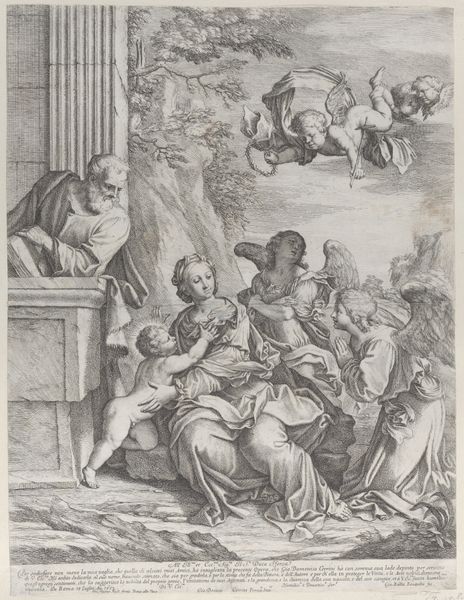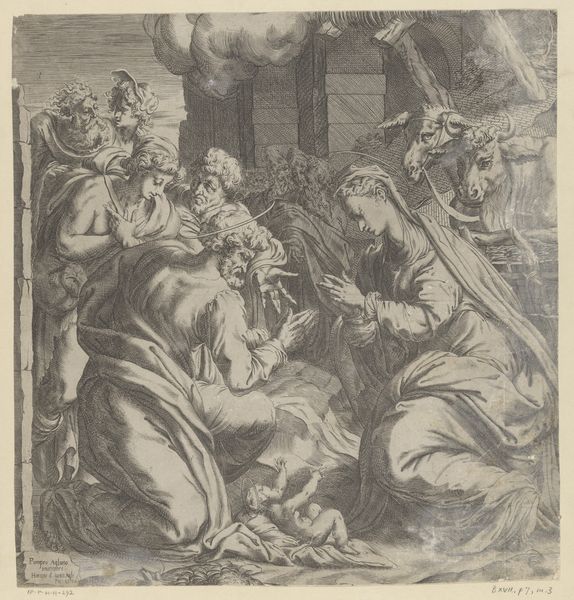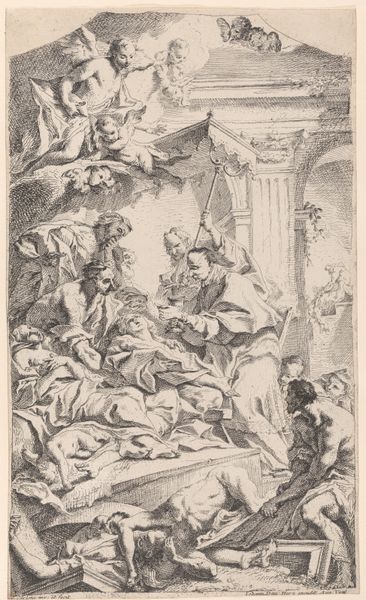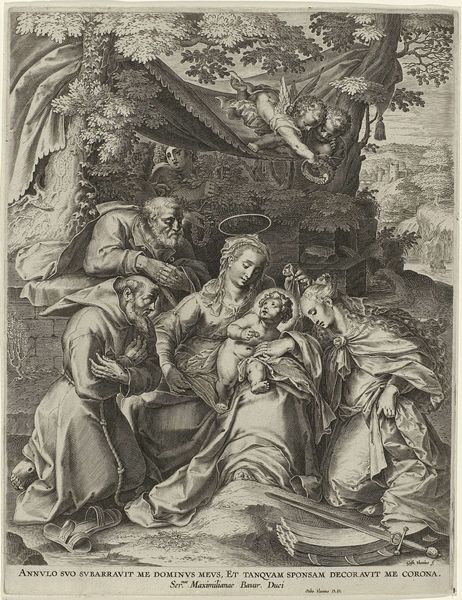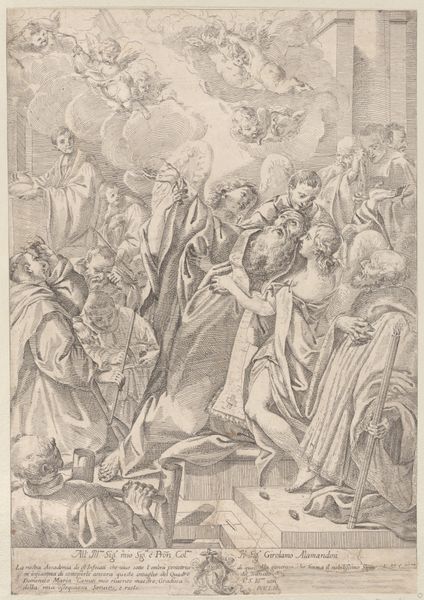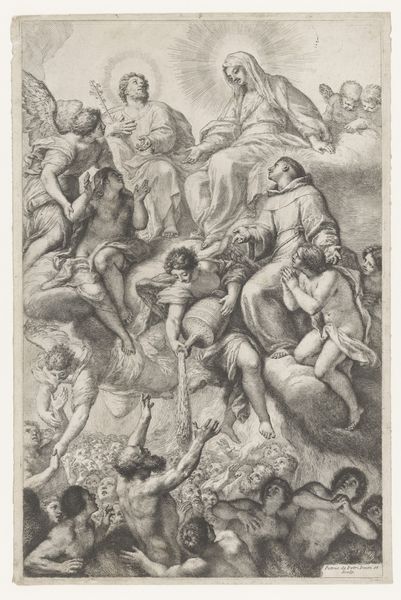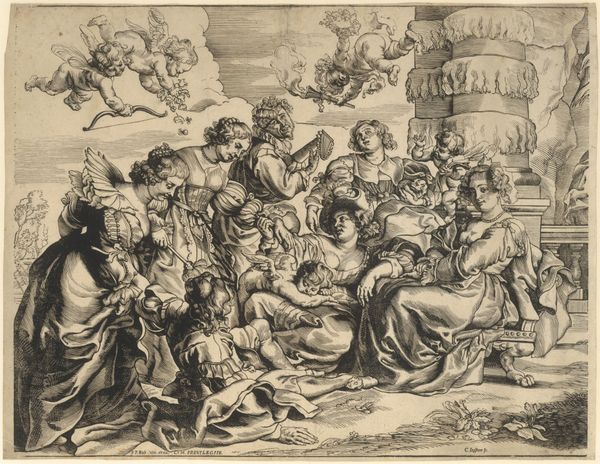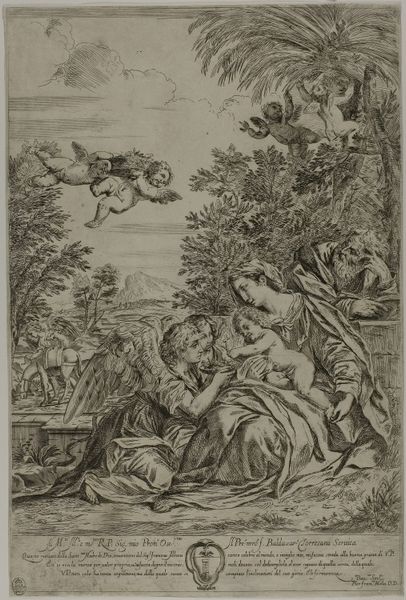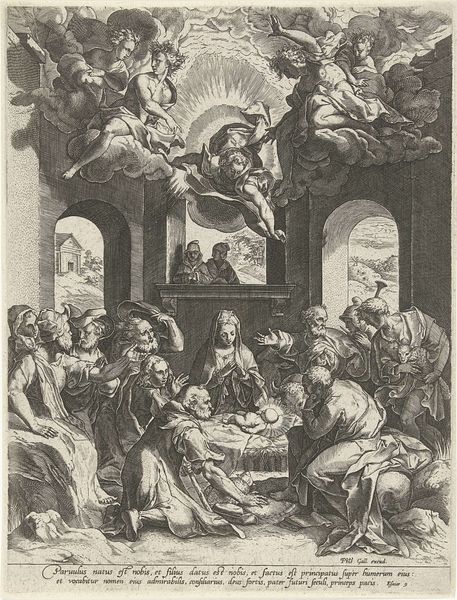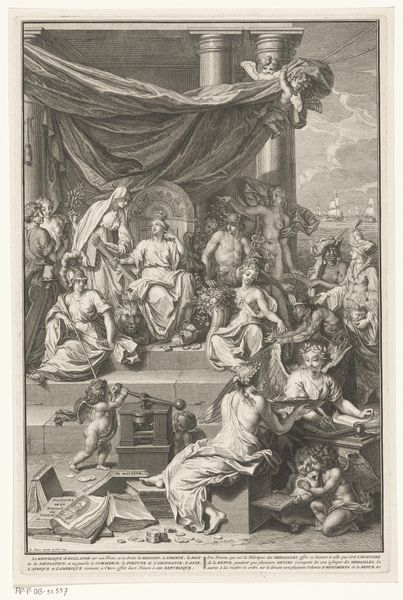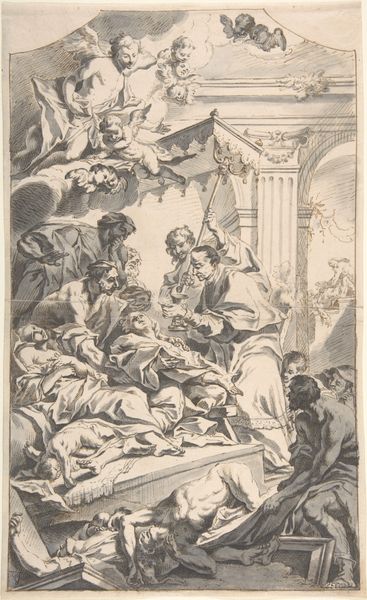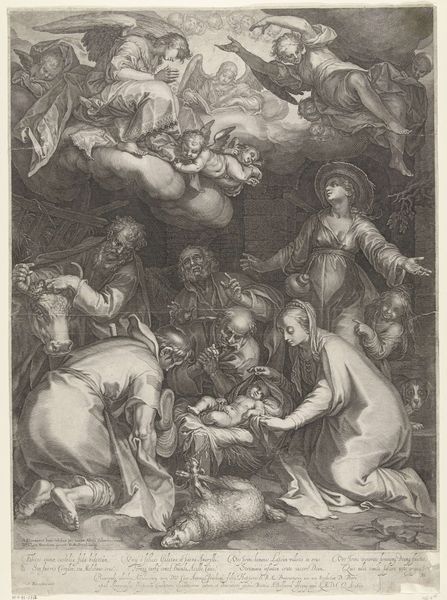
Allegorical scene with a sacrificial lamb 1640 - 1670
0:00
0:00
drawing, print, etching, graphite, charcoal, engraving
#
pencil drawn
#
drawing
#
light pencil work
#
allegory
#
narrative-art
#
baroque
# print
#
etching
#
pencil sketch
#
charcoal drawing
#
figuration
#
form
#
11_renaissance
#
charcoal art
#
pencil drawing
#
line
#
graphite
#
pencil work
#
charcoal
#
history-painting
#
academic-art
#
charcoal
#
graphite
#
engraving
#
pencil art
#
realism
Dimensions: Sheet (Trimmed): 13 3/4 × 11 1/8 in. (35 × 28.3 cm)
Copyright: Public Domain
Editor: This etching from somewhere between 1640 and 1670 is called "Allegorical scene with a sacrificial lamb" by Giovanni Battista Bonacina, currently at the Met. I'm really drawn to the intricacy of the lines, it feels almost like looking at a really detailed pencil drawing, yet somber, reflecting a historical narrative I don't quite grasp. What do you see in this piece? Curator: This work speaks volumes about the socio-political structures of the time, using allegory to navigate complex power dynamics. The sacrificial lamb, of course, has long-standing religious connotations, but look closely at who is offering the sacrifice and to whom. What does the act of sacrifice represent in the context of 17th-century societal norms, particularly in relation to family, gender, and religious power? Editor: So, the lamb isn't just about religion. I guess, the family with children also tells a story about dynastic power… The figures almost seem posed. Curator: Exactly! Consider the staging of the figures. How are women and children positioned? What roles are prescribed to them within this societal tableau? Does the etching serve to reinforce or subtly question those roles? Think about what Bonacina might be subtly critiquing, and what dialogues are at play here in representing an ideological narrative. Editor: So it is more than just what is there... Curator: Precisely. Think about how this image functions as a piece of visual rhetoric, potentially both reflecting and challenging the dominant ideologies of its time. By analyzing the composition and subject matter, we can reveal the layers of meaning embedded within it, speaking volumes about the artist's perspective on societal values. Editor: That’s given me a lot to think about, viewing the etching as an active voice within the conversations of its time. It certainly makes you wonder whose narrative it serves. Curator: Indeed, and by recognizing these nuances, we appreciate how art engages in the politics of its era and perhaps inspires different perspectives today.
Comments
No comments
Be the first to comment and join the conversation on the ultimate creative platform.
